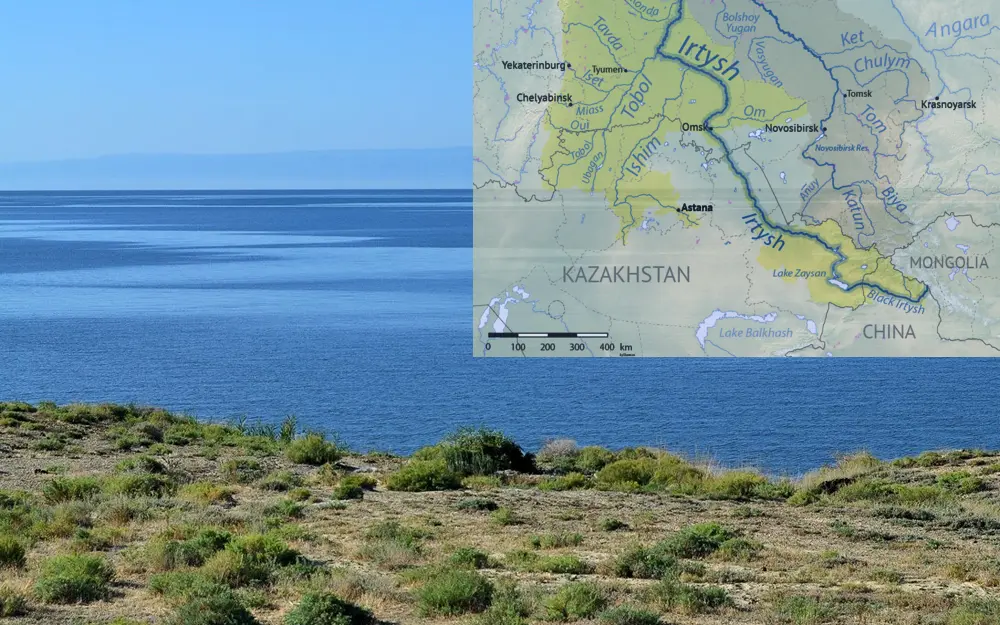Lake Zaysan

General data
- Name: Lake Zaysan
- Water system: River Ob
- Water type: Natural lake
- Progression: Irtysh -> River Ob -> Kara sea -> Arctic ocean -> Planet Earth
- Climates:
- Continents:
- Countries: Kazakhstan
Lake Zaysan is a freshwater lake, ca. 1,810 km² (700 mi²), in eastern Kazakhstan, in a hollow between the Altai and the Tarbagatai Mountains. It is the largest lake in the East Kazakhstan Region. The lake lies at an altitude of 420 m, is 105 km long and 22–48 km wide, with a maximum depth of 15 m. Its major tributaries are the Kara Irtysh (Black Irtysh) and Kendyrlyk from the east; its only outlet is the Irtysh River (or White Irtysh). The lake is generally frozen from the beginning of November to the end of April, but still has an abundance of fish. Since the construction of the Bukhtarma dam on the Irtysh downstream from the Zaysan, the lake has risen 6 m (20 ft) above its natural level. As the result, the area of lake essentially increased (nearly doubled: from about 1,800 km² to 3,500 km², or even to 5,000 km²), thus, in some sources the lake is indicated as part of an artificial reservoir. Lake Baikal is often considered the most ancient lake in the world, as clear evidence shows that it is 25–30 million years old. Lake Zaysan, however, may be even older, dating possibly from the Cretaceous period with a likely age in excess of 65 million years old (most probably around 70 million years), although its exact age is controversial and labelled with some uncertainty. Today, the ichthyofauna of Lake Zaisan consists of 21 species of fish, of which 16 species are native or local fish, and 5 species are localized, i.e. 24%. Especially sturgeon, whitefish, taimen, pike, perch, white-tailed carp, etc. The habitat of catfish, pike, perch and trout is very wide, distributed throughout the lake, and pike is often concentrated in areas where fishing is prohibited. Several species of whitefish and crucian carp are found in biotopes such as meadows, mainly in bays and along river banks. Fish species such as carp and burbot are rare. Today, due to a slight decrease in the prevalence of catfish in the lake, it is possible to increase the number of valuable fish such as carp. There are several fishing villages (artels) near the lake. Muskrat also lives in the lake. The lake area is also used for shipping.

 English
English
 Spanish
Spanish
 German
German
 French
French
 Serbian
Serbian
 Russian
Russian

